Fleas
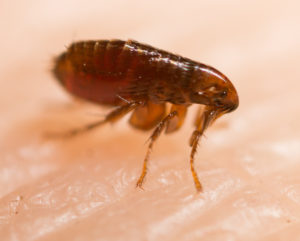
Fleas are vectors that can carry disease in the state of Alabama. More to come soon.
Ticks
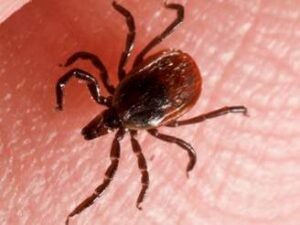
Ticks are a vector that can carry disease in the state of Alabama. More to come soon.
Carnivores
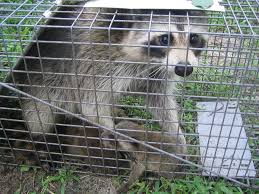
Carnivores are a vector that can carry disease in the state of Alabama. More to come soon.
Flies

Flies are a vector that can carry disease in the state of Alabama. More to come soon.
Bats

Direct contact with a bat may result in potential rabies exposure, so all bats that come in direct contact with humans should be tested for rabies. Many species of bats are protected by state and federal laws. It is important to follow all laws to protect these benecial animals.
For mor information about bats, visit the web sites below.
Biology
Bat Conservation International
Management
School IPM Action Plan for Bats
Bats – eXtension
Bats – Internet Center for Wildlife Damage Management
Cockroaches
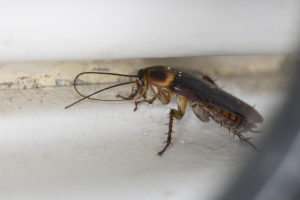
There are at least 25 species of cockroaches in Alabama, but only five are serious pests. Cockroaches are also known as palmetto bugs, water bugs, and croton bugs. They vary somewhat in appearance and habits, but in general they are all rather large, flattened insects, brownish or dark in color and fast moving. Roaches seek concealment in the daytime and also when disturbed at night. Most cockroaches are found outdoors. Outdoors, cockroaches are an important source of food for many forms of wildlife. They are also important in nutrient recycling. However, when indoors, cockroaches are a public health nuisance. They can serve as mechanical vectors for bacteria, protozoa, and viruses that can cause different forms of gastroenteritis in humans (food poisoning, dysentery, diarrhea, etc.).
Cockroaches can feed upon a great variety of materials such as cheese, beer, leather, bakery products, starch in book bindings, manuscripts, glue, hair, akes of dried skin, dead animals, plant materials, soiled clothing, and glossy paper with starch sizing. The most important aspect of cockroach damage derives from the insects’ habit of feeding and harboring in damp and unsanitary places such as sewers, garbage disposals, kitchens, bathrooms, and indoor storage indoors. Filth from these sources is spread by cockroaches to food supplies, food preparation surfaces, dishes, utensils, and other surfaces. Cockroaches contaminate far more food than they are able to eat.
Cockroach excrement and cast skins also contain a number of allergens, to which many people exhibit allergic responses such as skin rashes, watery eyes, congestion of nasal passages, asthma, and sneezing.
There are five kinds of cockroaches commonly found in Alabama:
1. The German roach is a very common species and the one usually found in kitchens. The adults are comparatively small (about 1/2 inch long), tan in color and often occur in large numbers. The immatures (nymphs) have dark markings which make them appear dark brown to black.
2. The American roach is reddish-brown and is the largest of the common roaches (about 1-1/2 inches in length at maturity). It is found more often in food establishments, although houses and apartments near such establishments frequently become infested.
3. The Oriental roach is also large (about 1 inch in length) and shiny black or very dark brown. It is often called a “water bug” or “black beetle.” This species is frequently found in dampness and may enter homes through sewer openings. It may likewise live outdoors during the summer months and move from home to home.
4. The brown-banded roach is a southern species but is often found in Indiana. It resembles the German roach in size but diers in habits. It may infest the entire home, rather than conning itself to the kitchen or where there is food. Infestations usually start from luggage, furniture or other materials shipped from one place to another.
5. The woods roach normally lives under the loose bark of dead trees, logs or stumps. It sometimes invades homes built in or near wooded areas, but it does not thrive indoors. Males are nearly 1 inch long and dark brown with a pale stripe on the outer margins of the wings. They are fairly good iers and often enter homes this way. They can also be carried in on rewood. The females are short-winged and resemble the Oriental roach, but they are seldom found indoors.
Control Measures and Materials
The chances of effective, lasting cockroach control are greatly increased when an integrated approach is used. Sanitation and exclusion precedes proper chemical application. The destruction of breeding places (by clearing out garbage and clutter, sealing cracks and openings, etc.) and the removal of food and water sources may reduce the necessity for chemical applications. When chemical applications are necessary, they must be applied strictly according to their labels and based upon the biology of the species. Evaluation after application is necessary to determine success.
Current electronic or ultrasonic devices are not likely to be effective in controlling cockroaches.
Sources and more information:
http://www.aces.edu/pubs/docs/A/ANR-1016/ANR-1016.pdf
http://ento.psu.edu/extension/factsheets/american-cockroaches
http://extension.entm.purdue.edu/publications/E-23.pdf
http://extension.entm.purdue.edu/publications/E-241.pdf
Mosquito
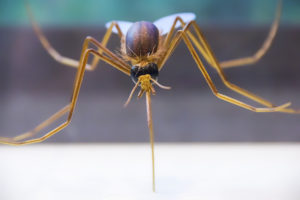
Mosquitoes are insects belonging to the order Diptera, the True Flies. Like all True Flies, they have two wings, but unlike other flies, mosquito wings have scales. “Mosquito” is a Spanish or Portuguese word meaning “little fly”.
There are over 3,000 different species of mosquitoes throughout the world; currently 176 species are recognized in the United States. There are over 50 species of mosquitoes known to occur in Alabama.
Only female mosquitoes have the mouth parts necessary for sucking blood. While biting using their long, piercing sucking proboscis, they inject an enzyme that inhibits blood clotting. They use the blood not for their own nourishment but as a source of protein for their eggs. Mosquitoes use exhaled carbon dioxide, body odors and temperature, and movement to nd a host. Once a host is found, the female mosquito will use molecular cues from the host’s skin to determine whether it is suitable for a blood meal. One of the most elective mosquito repellents, DEET, scrambles these molecular cues where they are received on the legs of the mosquito so the mosquito does not know it has landed on a suitable host.
Males differ from females by having feathery antennae and mouthparts not suitable for piercing skin. A mosquito’s principal food is nectar or similar sugar source.
Some mosquito species are capable of transmitting diseases such as malaria, yellow fever, dengue, lariasis and encephalitis including St. Louis encephalitis (SLE), Western Equine encephalitis (WEE), LaCrosse encephalitis (LAC), Japanese encephalitis (JE), Eastern Equine encephalitis (EEE) and West Nile virus (WNV)] to humans and animals. They also transmit heartworm disease (Dirolaria immitis) to dogs and cats, and sometimes wild carnivores and the occasional human.
Rodents

The rats and mice considered pests are often referred to as commensal rodents. The word commensal means “sharing one’s table.” This is appropriate as these rodents have shared man’s table for centuries. The term “rodent” means “to gnaw.” Like all rodents, rats and mice have a single pair of chisel-like incisor or front teeth that grow throughout their lifetime. Their teeth are kept sharp and are sized due to their guarding against one another and by the pests’ continuous gnawing on a variety of objects.
The three most important commensal rodents are:
- House Mouse
- Norway Rat
- Roof Rat
Rodents and disease
Rodents have been a major cause of death and disease for many years. Today, the threat is not as significant as it once was because of sanitation and rodent control programs. However, the threat is still evident, and the potential of disease must always be kept in mind.
Some rodent-transmitted diseases include:
- Plague — This was caused by a bacteria that is spread from rats to people by the oriental rat ea. The Black Death that killed 25 million people in Europe during the 14th century was the result of Plague. Plague does not exist in commensal rodents in the ., but it is still found in some native rodents, such as brown squirrels, in the western United States and other parts of the world.
- Salmonellosis (acute food poisoning) — Salmonella bacteria can thrive on decaying food, meat, and poultry, and in sewers, livestock facilities, septic tanks, accumulated garbage, and other unsanitary environments. Rodents visit contaminated areas and then visit homes and food facilities, causing the spread of the salmonella. The bacteria grows in the intestinal tract of rodents and spreads through food contaminated with rodent feces. There are about two million cases of salmonellosis in the United States each year. Current research shows that rats and mice do not play a major role in the spread of salmonellosis to humans but can signicantly spread the disease to animals.
- Rat-bite fever — Rat bite fever is caused by a bacteria that lives in the saliva glands of both rats and mice. It causes unlike symptoms that last for several days and in severe cases can be deadly. Although it is not
common in the United States, it is possible many cases are unreported, as the symptoms can be mistaken for the u. Conservative estimates place the number of people bitten by rats and mice between 14,000 and 20,000 annually. Typhoid and dysentery — Rats have been shown to carry the organisms of these diseases. - Trichinosis — Rats serve as vectors by carrying the trichina worm, which is responsible for trichinosis. This disease occurs when the worm is ingested when eating undercooked pork.
- Hantavirus — There were several outbreaks of this virus in the southwestern United States from 19931995. Hantavirus has been associated with deer mice, not commensal rodents.
Physical Abilities and Senses
Rats and mice cannot see well beyond 3 or 4 feet, but they are sensitive to motion up to 30-50 feet away. They are color-blind, but are sensitive to and may avoid light-colored and reective objects. Therefore, rodents are most active during the night hours when light levels are low and they can rely primarily on their other senses, especially the sense of smell, touch and hearing.
Rodents have a very strong sense of taste, which can lead to rejection of bait if they are contaminated with odors or other chemicals. To ensure acceptance of bait, use fresh, food-quality grain ingredients.
Smell is one of their most important senses. Rodents mark objects and pathways with urine or other secretions, then use their sense of smell to recognize the odors for guidance, to distinguish members of their own colony, and to tell if a stranger is threatening.
Rodents are able to hear at high frequencies. They use hearing to locate objects within a close range.
If rodents cannot go around an object, if possible they will tunnel through it. They can gnaw through many materials, including cinderblock, aluminum siding, glass, and improperly cured concrete. They can squeeze through very small openings — as small as 1/2” for a rat and 1/4” for a mouse.
